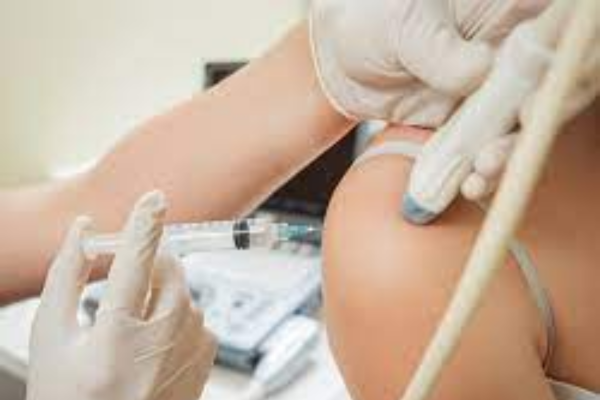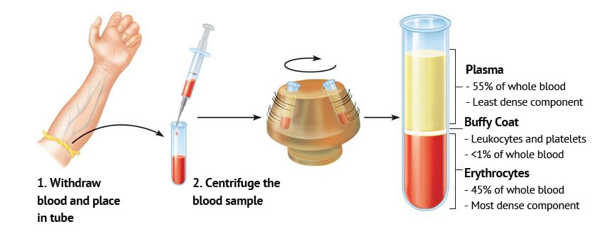
Platelet-Rich Plasma (PRP) injections have emerged as a groundbreaking therapeutic approach in the realm of joint pain treatment. This innovative procedure utilizes the body’s natural healing properties to alleviate pain and promote tissue regeneration. Let’s explore how PRP injections are transforming the landscape of joint pain management and providing new hope for individuals seeking effective and non-invasive solutions.
Harnessing the Power of Platelets:
PRP is derived from the patient’s own blood, where the concentration of platelets is increased through a specialized centrifugation process. Platelets contain growth factors and bioactive proteins that play a crucial role in tissue repair and regeneration. By harnessing these healing properties, PRP injections aim to stimulate the body’s natural healing mechanisms.
Non-Invasive Nature of the Procedure:
PRP injections offer a non-invasive alternative to traditional joint pain treatments, such as surgery or prolonged medication use. The procedure involves drawing a small amount of the patient’s blood, processing it to concentrate platelets, and then injecting the PRP directly into the affected joint. This minimally invasive approach reduces the risk of complications and allows for a quicker recovery.
Targeted and Precise Treatment:
One of the key advantages of PRP injections is their ability to provide targeted and precise treatment. The injection is administered directly into the affected joint, delivering a concentrated dose of growth factors to the site of injury or inflammation. This targeted approach enhances the effectiveness of the treatment and accelerates the healing process.

Reduction of Inflammation and Pain:
PRP injections have demonstrated significant success in reducing inflammation and alleviating pain associated with various joint conditions, including osteoarthritis and tendon injuries. The growth factors in PRP promote tissue repair, reduce inflammation, and modulate pain signals, leading to improved joint function and increased comfort for patients.
Stimulating Tissue Regeneration:
PRP’s ability to stimulate tissue regeneration is a key factor in its success. The growth factors released by platelets initiate the repair and regeneration of damaged tissues, promoting the formation of new collagen and other essential components. This regenerative process contributes to the restoration of joint health and function.
Versatility in Joint Pain Management:
PRP injections have shown efficacy in treating a range of joint-related issues, including knee pain, shoulder pain, hip pain, and more. This versatility makes PRP a valuable option for patients suffering from various joint conditions, providing a customized and adaptable approach to pain management.
Potential for Long-lasting Relief:
While individual responses may vary, many patients experience long-lasting relief from joint pain after PRP injections. The regenerative effects of PRP contribute to sustained improvements in joint function, potentially reducing the need for additional interventions or ongoing medication use.
Conclusion:
PRP injections represent a revolutionary approach to joint pain treatment, offering a non-invasive and personalized solution for individuals seeking relief from pain and improved joint function. As research and clinical experience continue to evolve, PRP holds great promise in transforming the landscape of joint care, providing hope for a more comfortable and active life for those with chronic joint conditions.
FAQ
What is PRP and how does it work in joint pain treatment?
PRP, or Platelet-Rich Plasma, is a concentrate derived from a patient’s own blood, containing a higher concentration of platelets. These platelets release growth factors that stimulate tissue repair and regeneration, making PRP an effective treatment for joint pain by promoting healing.
What conditions can PRP injections help treat?
PRP injections have shown efficacy in treating various joint-related conditions, including osteoarthritis, tendonitis, ligament injuries, and other musculoskeletal issues. It is commonly used for knee pain, shoulder pain, hip pain, and other joints.
How is the PRP injection procedure performed?
The PRP injection procedure involves drawing a small amount of the patient’s blood, processing it to concentrate platelets, and then injecting the PRP directly into the affected joint. The entire process is typically done in a medical office and is minimally invasive.
Is PRP a painful procedure?
Discomfort during the PRP injection procedure is usually minimal. Some patients may experience mild pain or soreness at the injection site, which typically resolves within a short period. Local anesthesia may be used to minimize any discomfort during the procedure.
How long does it take to see results from PRP injections?
The timeline for experiencing results from PRP injections can vary. Some patients may notice improvement within a few weeks, while others may take a few months. Long-term benefits often include reduced pain, improved joint function, and enhanced overall mobility.
Are there any risks or side effects associated with PRP injections?
PRP injections are generally considered safe since they use the patient’s own blood, reducing the risk of allergic reactions or infections. However, as with any medical procedure, there are potential risks, such as infection, bleeding, or injection site discomfort. Patients should discuss potential risks with their healthcare provider.
How many PRP sessions are typically needed for joint pain treatment? The number of PRP sessions required varies depending on the specific condition and individual response to treatment. While some patients experience relief after one session, others may require a series of injections spaced over weeks or months to achieve optimal results
GET APPOINTMENT
Schedule Appointment : Your Path to Specialized Care
Get rid of your pain, stress, and enduring with our 24/7 dental services. It's a priority to relieve the pain in surgeon as much as possible. 90% of customers claim that they would come back & recommend us to others.
